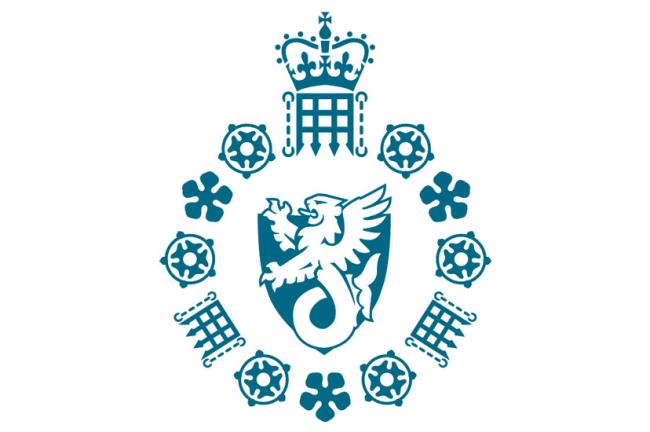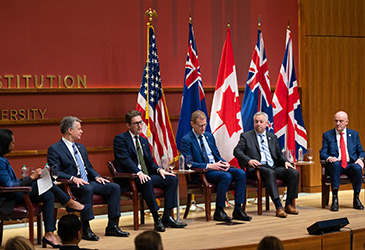Since the Cold War
Counter-espionage to counter-terrorism
By Professor Christopher Andrew, author of "The Defence of the Realm".
The end of the Cold War, the sudden collapse of the Soviet Bloc in 1989 and the disintegration of the Soviet Union itself in 1991 transformed the priorities of the Security Service.
MI5 reported to the Home Secretary that ‘between 1989 and 1991, the already declining subversive threat reached a new low and the espionage threat from some countries (with the notable exception of Russia) all but disappeared.’ In 1992 MI5 ceased to keep a record of ‘rank-and-file members of subversive organisations’.
During the early 1990s the Service became for the first time in its history primarily a counter-terrorist, rather than a counter-espionage, agency. It could not complete the transition, however, until it gained the lead intelligence role against the main current terrorist threat, the Provisional IRA (PIRA) campaign in mainland Britain. On 7 February 1991 a PIRA mortar, fired from a Ford Transit van in Horseguards Avenue, exploded on the Downing Street lawn in the middle of a cabinet meeting. The Prime Minister, John Major, was told that, if the mortar had landed ten feet closer to the Cabinet Room, which overlooks the lawn, ‘half the Cabinet could have been killed.’
The near success of the mortar attack, following the Brighton bombing during the Conservative Party conference seven years earlier, emphasised the need for better intelligence on IRA attacks. The case for transferring the main intelligence responsibility from the Metropolitan Police Special Branch (MPSB) to the Security Service was reinforced by Service successes against PIRA on the continent, where it already had the lead intelligence role. The decision to give the Service the lead role against PIRA in Britain was announced by the Home Secretary, Ken Clarke, to the Commons on 8 May 1991. The official handover from the MPSB took place on 1 October 1991
On her appointment as Director General in March 1992, Stella Rimington became the first female head of any of the world’s leading intelligence agencies. Though the first cracks in the glass ceiling which limited women’s employment opportunities in the Security Service had appeared during the First World War, progress had later slowed. In 1972 many female graduates had signed a petition complaining against career discrimination. The biggest obstacle to female promotion was the long-standing belief throughout the British intelligence community that women were unsuitable for agent-running. That barrier was broken in 1978 when Rimington became one of the first female agent-runners. By the time she became DG, over 40% of MI5’s officers (and a majority of other staff) were women.
Rimington was also the first DG whose appointment was publicly announced. Once she got over the shock of her early encounter with the paparazzi, she began to see media interest and her unprecedented public visibility as a means of helping to ‘blow away’ myths about the Service. In June 1994 she became the first DG to appear in public when she delivered a televised lecture on ‘Security and Democracy: Is There a Conflict?’ Later the same year, Rimington appeared before the newly established oversight committee of parliamentarians, the Intelligence and Security Committee (ISC): a practice continued by her successors. In 1997 the Service began advertising openly for recruits and releasing its early records to the National Archives. The following year MI5 launched the first version of its Internet website.
Between 1977 and 1989 there was no year when PIRA attacks in Britain occurred on more than four days. In 1990, however, there were attacks on nineteen days – more than during the whole of the 1980s. The total rose to a record forty-seven days in 1992. The outlook then appeared bleak – not least because PIRA had begun a bombing campaign against the City of London, intending to destroy its position as the financial capital of Europe by persuading foreign financial businesses to relocate out of London.
Despite devastating bomb attacks on the Baltic Exchange and the NatWest Tower, PIRA failed to achieve its aim. A Whitehall report commented: ‘Only a combination of good intelligence, good policing and good luck prevented several more incidents on a similar scale.’ Among other counter-terrorism successes was Operation AIRLINES which, in the summer of 1996, defeated a well-planned PIRA attempt to disrupt the whole of Greater London’s electricity supply.
The Security Service believed that its success in limiting PIRA’s mainland bombing campaign helped to bring to an end the Troubles in Northern Ireland. Sir Stephen Lander, Rimington’s successor as DG, told Prime Minister Tony Blair at a meeting on 30 October 1997 that, following the PIRA ceasefire begun three months earlier, key figures in its leadership seemed ‘prepared to consider a settlement which stops short of a united Ireland’. Most proved willing to accept the power-sharing Belfast Agreement concluded on Good Friday 1998, which provided that Northern Ireland would remain part of the United Kingdom as long as a majority of its people wished.

